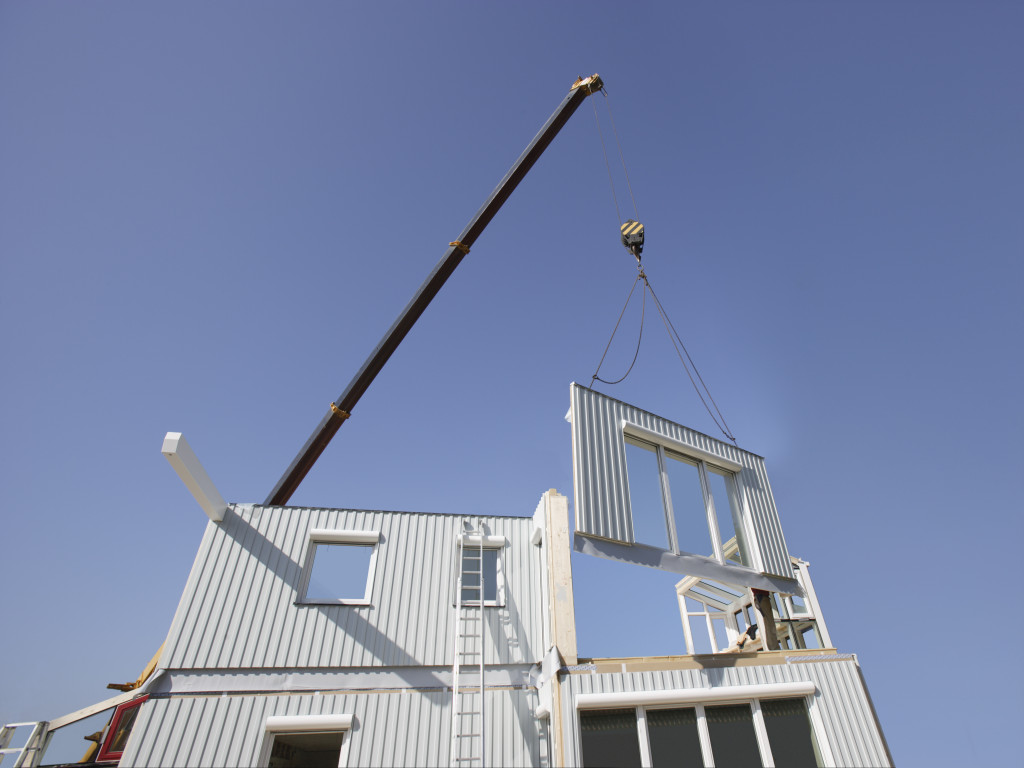- Prefabrication reduces construction time, costs, and the environmental impact of building projects.
- Steel-based prefabricated structures are strong, lightweight, and can be readily welded for creative designs.
- Wood-based structures are affordable and provide a wide range of design options.
- Plastic-based structures are lightweight, durable, and recyclable.
- Quality materials should be used to ensure the longevity of prefabricated structures and components.
The construction industry has evolved tremendously over the years, and one of the most significant changes is the advancement of prefabrication. Prefabrication is the process by which building components and structures are assembled offsite and then transported to the construction site where they are installed. Here are its several advantages and the most commonly used materials in prefabrication.
Benefits of Prefabricated Structures & Components
Prefabrication offers several benefits to builders. In addition to reducing the time needed for construction, it also helps reduce overall costs. Prefabricated components are generally mass-produced, so they often cost less than traditional building materials. Here are other advantages it provides:
Cost-effectiveness
As mentioned earlier, prefabrication reduces the costs associated with materials and labor. This is because components are usually mass-produced in a factory setting, which eliminates much of the labor needed for traditional construction methods.
Sustainability
A considerable amount of the waste generated from construction sites ends up in landfills posing environmental hazards. However, the prefabrication methodology produces less waste and reduces the overall carbon footprint for construction projects.
Manufacturers of prefabricated structures are often able to reuse or recycle materials that might have otherwise ended up in the waste stream. Compared to traditional construction methods that are primarily reliant on on-site activities, prefabrication reduces the possibility of errors in measurements and usage of materials, thus creating a more sustainable option for construction projects.
Consistent Quality
Consistency is vital when it comes to building structures to minimize the risk of structural failure, which could have significant financial and safety consequences. Utilizing prefabricated structures helps eliminate human-related errors, reducing overall cost and ensuring a more consistent level of quality for every project. With a controlled manufacturing process, defects are either minimized or eliminated, ensuring that all components delivered to the construction site are of the same quality.
Flexibility in Design
Several design options are available for businesses seeking to utilize prefabricated structures. First, since prefabricated structures are manufactured offsite, various designs can be customized to meet the client’s specific requirements.
Additionally, construction work can proceed irrespective of weather conditions, thus saving time and money for the project by reducing downtime and delays. Finally, the use of prefabrication allows for the construction of modules or individual components in larger sections, reducing the time required to complete the project.

Steel-based Structures
Steel-based prefabricated structures have gained significant traction in the construction industry due to their durability and strength. Steel is well suited for modular buildings given its lightweight, low maintenance, and fire resistance properties.
Due to its ability to be welded, steel can be manufactured in many shapes and sizes, allowing for creative design options to meet specific needs. Enterprises are able to produce customized products that meet the particular requirements of different clients.
To ensure an efficient post-welding process, invest in high-quality weld brush supplies that are capable of producing a professional finish. A weld brush will help to create a smooth, clean surface and reduce any potential risk of oxidation or rusting in the future.
Wood-based Structures
Wood-based prefabricated structures are famous for commercial and residential projects due to their affordability. Wood is relatively inexpensive compared to steel, making it an attractive option for those on a budget.
Moreover, wood is lightweight, allowing for more accessible transportation and installation of the components. It is also versatile in terms of design, allowing builders to customize and innovate to meet client’s preferences.
An important consideration when using wood-based structures is their quality. Make sure to use suitable quality materials, such as pressure-treated lumber and plywood, for optimum results and longevity.

Plastic-based Structures
Plastic-based prefabricated structures are mostly favored for their low cost, lightweight properties, and versatility. Plastic is highly durable and robust, making it an excellent choice for both indoor and outdoor applications.
The material has good insulating properties, thus providing excellent protection from the elements. It is also resistant to moisture damage, making it a great option for areas prone to flooding.
Additionally, plastic is recyclable, so it can be reused and repurposed without much effort. Just ensure that you invest in quality plastic to ensure that the structures can withstand various conditions and remain durable for many years.
Utilizing prefabricated structures and components in building projects has become a popular option due to its various benefits. Prefabrication reduces construction time and costs while enabling creative design options. Steel, wood, and plastic are the three most commonly used materials in prefabrication, each with its own unique advantages and disadvantages. Investing in high-quality materials is critical to ensure that the structures and components remain durable for many years to come.

